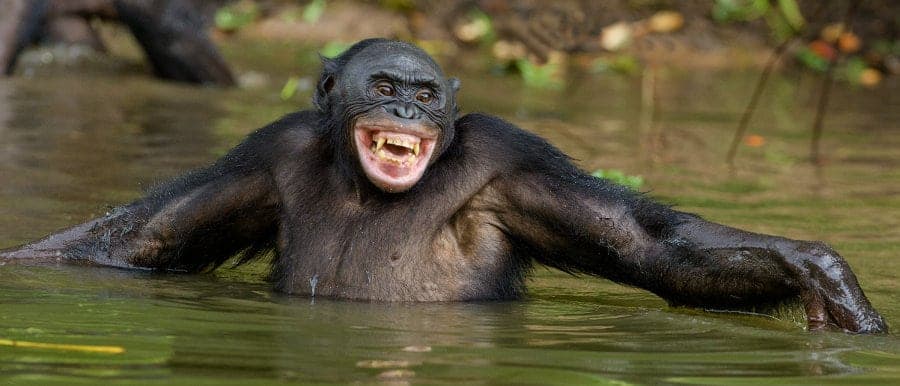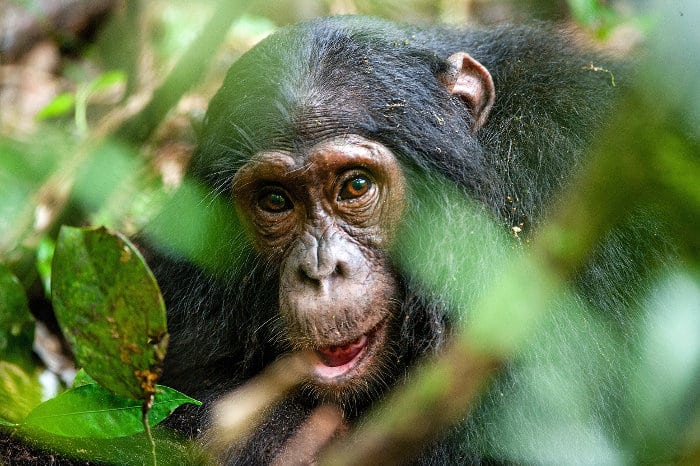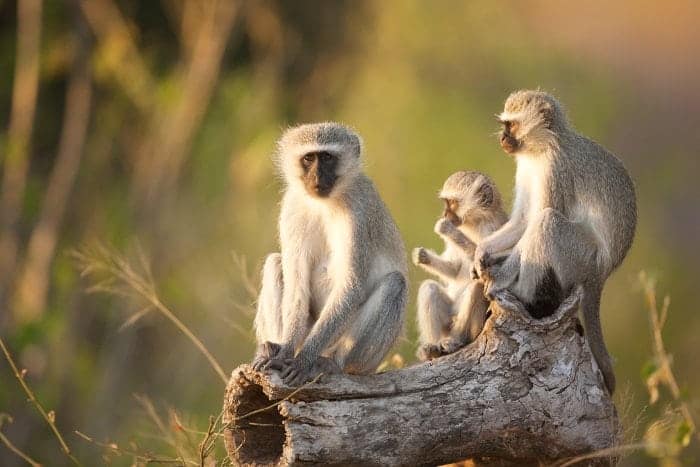
It’s rare to find a quiet place in Africa. And top of the list for making the most noise are the primates, mammals not dissimilar to you and me. Most primates come from the trees, so you’ll spot them in woodland areas rather than open grasslands.
There’s more woodland in East Africa, especially where the plains meet the Congo Basin and one of the world’s largest rainforests. East Africa is also the only place to meet gorillas and chimpanzees, but even in Southern Africa you can’t escape the quirky and cheeky goings on provided by primates.
Gorilla

The world’s last 1000 or so wild mountain gorillas are marooned on three volcanic, forested mountains: Uganda’s Bwindi Impenetrable Forest, Rwanda’s Volcanoes National Park, and the Virunga National Park in the eastern Democratic Republic of the Congo.
Visiting them is exhilarating and expensive, a US$700 permit getting you one hour with a habituated troop. It’s worth it. No fences, no boundaries, just you and the gorillas coming face to face.
Chimpanzee

Chimpanzee communities are dotted across the west of East Africa. Visiting them is almost spooky as you see the intense similarities between chimpanzees and yourself: faces, fingers, communications and intelligence. Like the gorillas you can walk to a habituated troop and spend an hour in the primates’ presence.
Baboon

Baboons are a ubiquitous sight in most national parks and reserves. They like to scavenge and they will startle human visitors, jumping through windows and stealing food off people on safari.
National park entry gates are a favourite place for them, meaning that baboons could be the first animal you see on a safari. You’ll regularly see them outside parks as well, often on a main highway or encroaching on a town. And while some think they look ugly, there’s something resonant about their attitude.
Monkeys

Then there are Africa’s monkeys. Black and white colobus monkeys swinging through Kenya’s forests, vervet monkey troops hopping across the grass, and mangabeys that hide high in the branches.
There are many dozens of species, especially in East Africa, where Congo Basin specialists can be seen without you having to visit the Congo. It can be hard to see monkeys on a game drive as most shy away from the noise.
Walking safaris are ideal as you have time to check all the trees and can listen to the distant rustling and calling of a troop.